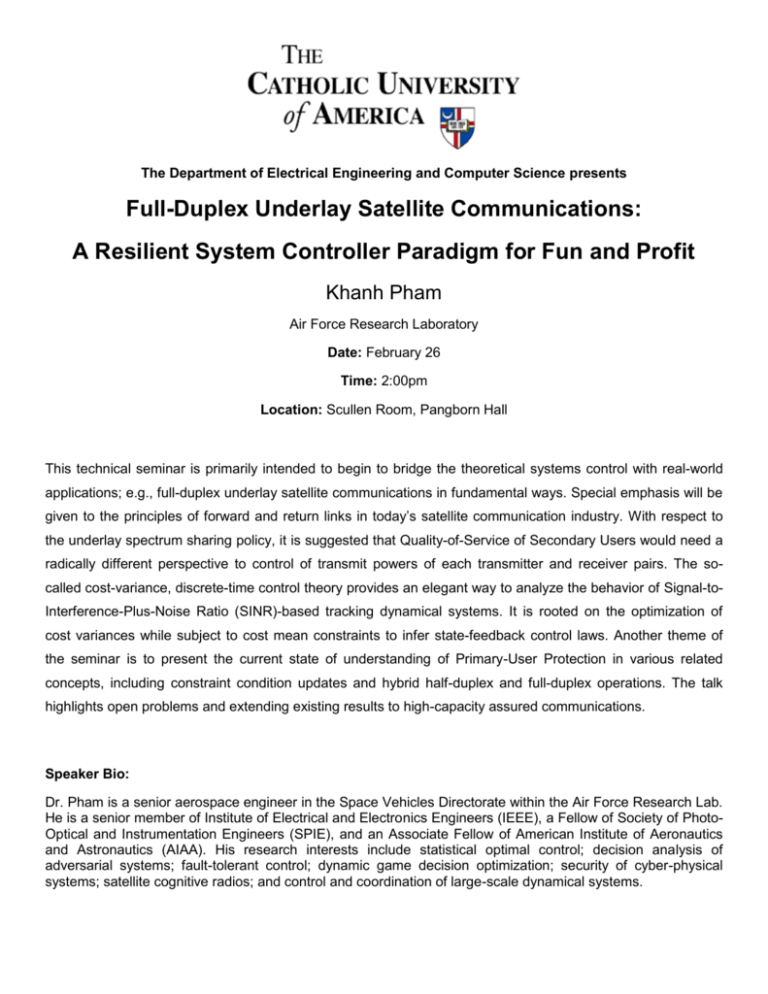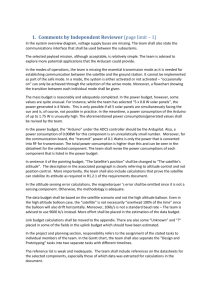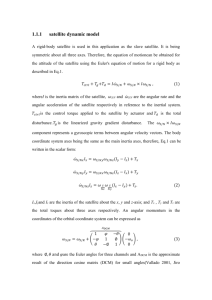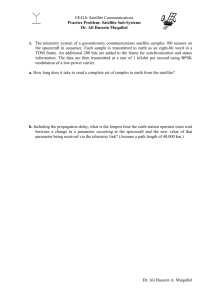Full-Duplex Underlay Satellite Communications: A Resilient System
advertisement

The Department of Electrical Engineering and Computer Science presents Full-Duplex Underlay Satellite Communications: A Resilient System Controller Paradigm for Fun and Profit Khanh Pham Air Force Research Laboratory Date: February 26 Time: 2:00pm Location: Scullen Room, Pangborn Hall This technical seminar is primarily intended to begin to bridge the theoretical systems control with real-world applications; e.g., full-duplex underlay satellite communications in fundamental ways. Special emphasis will be given to the principles of forward and return links in today’s satellite communication industry. With respect to the underlay spectrum sharing policy, it is suggested that Quality-of-Service of Secondary Users would need a radically different perspective to control of transmit powers of each transmitter and receiver pairs. The socalled cost-variance, discrete-time control theory provides an elegant way to analyze the behavior of Signal-toInterference-Plus-Noise Ratio (SINR)-based tracking dynamical systems. It is rooted on the optimization of cost variances while subject to cost mean constraints to infer state-feedback control laws. Another theme of the seminar is to present the current state of understanding of Primary-User Protection in various related concepts, including constraint condition updates and hybrid half-duplex and full-duplex operations. The talk highlights open problems and extending existing results to high-capacity assured communications. Speaker Bio: Dr. Pham is a senior aerospace engineer in the Space Vehicles Directorate within the Air Force Research Lab. He is a senior member of Institute of Electrical and Electronics Engineers (IEEE), a Fellow of Society of PhotoOptical and Instrumentation Engineers (SPIE), and an Associate Fellow of American Institute of Aeronautics and Astronautics (AIAA). His research interests include statistical optimal control; decision analysis of adversarial systems; fault-tolerant control; dynamic game decision optimization; security of cyber-physical systems; satellite cognitive radios; and control and coordination of large-scale dynamical systems.











